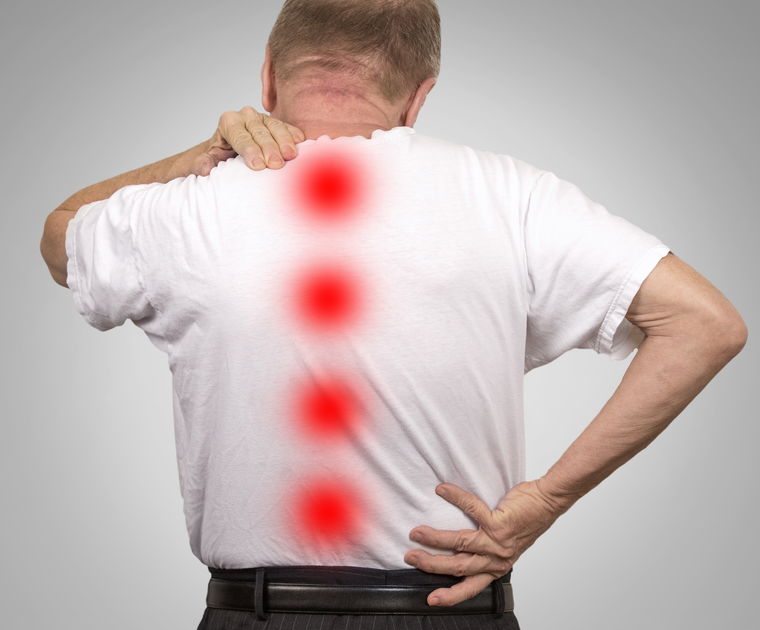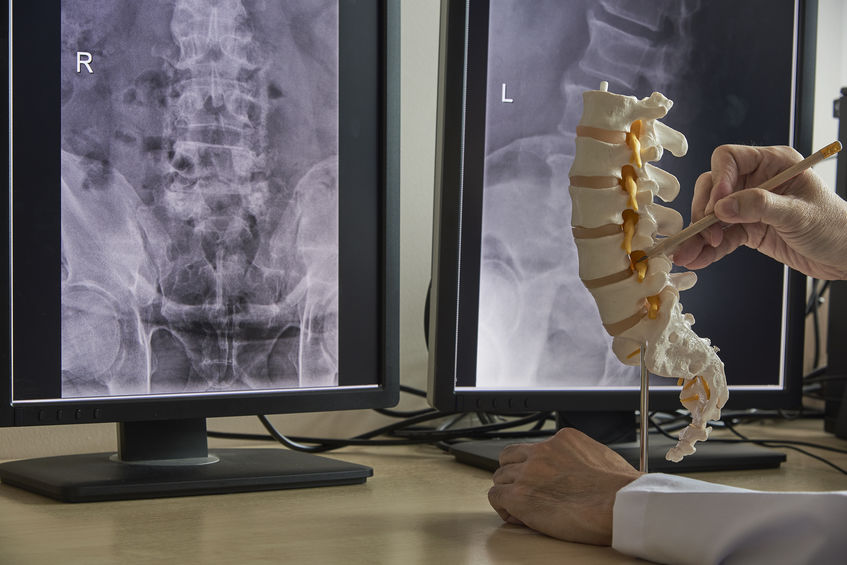It is common to feel pain in your neck and back after a car or truck crash. As you were hurled around your vehicle, your head and body may have slammed into the steering wheel, door, dashboard, and seat. Unfortunately, you may now have a bulging disc in your neck or back – or both.
This article provides information about what this diagnosis means, the medical treatment that you need, and its effect on your injury claim or lawsuit.
What is a bulging disc?
The spinal column consists of seven neck (cervical), 12 mid back (thoracic), five low back (lumbar) and two other bones. These vertebrae, ligaments, and facet joints form the skeleton. The central nervous system transmits messages through the spinal cord which is protected by the spinal column.
These 26 vertebrae are separated by spongy discs made of cartilage. They are filled with a soft material (pulposis). Think of the jelly inside of a donut. The function of the intervertebral discs is to keep the bones from rubbing against each other. They act like the shocks on your vehicle.
The sharp forces during the car collision can cause the soft outer material (fibrosis) to bulge out. This can put pressure on the vertebrae, nerve roots, and other sensitive parts of the spinal column and cause you substantial pain as they rub together.
What often happens at the ER
You should seek immediate medical treatment after a crash. But the only test usually performed at an emergency room is an x-ray. It only shows broken bones, which very few people have after a wreck — and almost no one has them in their neck and back. Further, a bulging disc rarely is apparent immediately after a car or truck collision.
Sometimes — especially if you have a gold health insurance plan — expensive computed tomographs (also called CTs or “cat scans”) will be performed. Again, these are not sophisticated enough to show if you have a bulging disc.
You are discharged from the hospital with tests that show you have a minor injury. But you are in shock and scared. Your vehicle may have been destroyed and is out of commission and you have no transportation. You are wondering how you can work and just move without pain.
And wait until you see the medical bill that might be secured by a hospital lien that you have to pay from your settlement or verdict if the crash was caused by another driver’s negligence.
How do you know if you have a bulging disc in your neck or back?
In the next few days or weeks (if you did not feel them immediately), you may start feeling these symptoms:
- headaches;
- pain and tenderness in the neck, between the shoulder blades, and in the upper and especially lower back;
- loss of range of motion;
- dizziness;
- altered vision;
- ringing in ears;
- pain in jaw;
- nausea;
- inability to sleep;
- fatigue;
- difficulty concentrating; and
- irritability
These may be caused because you strained or sprained your neck and/or back. Your muscles, ligaments, tendons, joints, fascia, and connective tissue are torn. This “whiplash” can be very painful. Fortunately, strains and sprains usually go away within a few months.
For more info: Soft tissue injury after a car accident
You need medical treatment ASAP
The only way to know whether you have a strain/sprain, a bulging disc, or another injury is to see a doctor.
When you delay your medical treatment, this causes your medical problems to worsen. It also allows the insurance company and its lawyers to argue that your injury was minor and they you few medical bills to support a large jury verdict, so it will offer you far less money in a settlement.
For more info: Neck and back injury: what is average paid for a car wreck?
However you may not know which doctor to see. Many primary care physicians do not know how to diagnose and treat injuries that happen after a car accident — or choose not to even get involved in them. They may write a prescription for an opioid medication (that can quickly become habit-forming).
A Fort Worth personal injury lawyer can help you find the best medical professionals in our area to treat you, often under a delayed payment schedule. We work with many doctors in North Texas.
The doctor will use different ways to resolve your injuries depending on his or her area of practice. Physical therapy, chiropractic treatment, anti-inflammatories and muscle relaxers, and other treatment can often help.
If your pain continues, there are other more advanced methods that will be used to diagnose and treat your injury. The doctor can refer you to a specialist like a neurologist or an orthopedic or neurosurgeon if additional diagnostic tests like magnetic resonance images (MRIs) are needed or refer you for testing themselves.
More aggressive treatment including steroid injections and nerve and facet joint blocks may be considered.
Tests may show that the pulposis ruptured the outer layer, has leaked, and is pressing on nerve roots. Depending on the test results, the specialist may determine that you have a herniated disc, pinched nerve, or other more serious problem that may require surgery to correct.
Herniated and bulging discs: what should you do?
You may be entitled to compensation
Depending on how your crash happened and other factors, you may be able to recover your damages from another driver or company.
Berenson Injury Law has specialized in car, truck, and 18-wheeler crash cases for over 40 years. We have handled hundreds of bulging and herniated disc cases over the years and understand the medical and legal issues involved.
Contact us with your questions at 1-885-801-8585 or chat with us online. The first consultation is free.
Related injuries we have blogged about:




